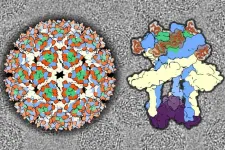(Press-News.org) INFORMS Journal Marketing Science Study Key Takeaways:
Crowdsourcing generates thousands of ideas for new products.
AI can immediately help screen out bad ideas and narrow the field to the best ones in crowdsourcing to improve efficiency.
Ultimately, AI could identify the best ideas or even design good ideas.
BALTIMORE, MD, January 3, 2024 – New research has found a way to leverage the power of artificial intelligence (AI) to more efficiently screen out bad ideas to focus on only good ideas in the crowdsourcing process within ideation. More specifically, the research has arrived at a simple model for screening out ideas that experts might consider “bad.” Importantly, managers can adjust their model to determine how many bad ideas to screen out, without losing good ones. The research also found a single new predictor that screens out atypical ideas and preserves more inclusive and rich ideas.
The article, published in the peer-reviewed INFORMS journal Marketing Science, is called “Can AI Help in Ideation? A Theory-based Model for Idea Screening in Crowdsourcing Contests.” The authors of the study are J. Jason Bell of the University of Oxford, Christian Pescher of Universidad de los Andes in Chile, Gerard Tellis of the University of Southern California and Johann Füller of the University of Innsbruck in Austria.
Business managers will often engage in crowdsourcing to generate the largest number of ideas for a new product or service. These crowdsourcing contests can generate thousands of ideas, forcing managers and their teams to physically and manually wade through each to identify the best ones. This is not only time consuming, but may lack consistency and continuity in the evaluation.
The study authors aimed to address this by focusing on what AI could do to improve the process.
“Idea generation and screening are fundamental to marketing success because they comprise the start of new product development,” says Tellis. “They belong to the ‘fuzzy front end,’ a key point of leverage in new product development.”
The researchers used data from Hyve, an innovation company that runs a crowdsourcing platform (www.HyveCrowd.com) for idea generation and selection. They asked the platform to specify the threshold of accuracy that would satisfy Hyve’s clients. Using a data set of 21 crowdsourcing contests that included 4,191 ideas, they tested how AI could assist in the crowdsourcing process. The model was fitted on 20 contests and used to predict success in the 21st idea left out.
“What we found was that once developed, AI models are relatively low-cost to operate, they do not share internal biases or succumb to internal biases,” says Bell. “By ‘internal biases’ we mean a natural bias that may occur when the human evaluator may see an idea as challenging their own favored approach.”
Pescher adds, “We also found that AI models are private, improving the ability to protect intellectual property, they cannot suffer from exhaustion, and they are transparent.”
“People and experts are still needed,” says Füller. “In the selection phase, AI can replace humans in the screening and narrowing of those ideas. But in the long run, if automation is used properly, it can even eliminate the need for human idea generators and make crowdsourcing itself obsolete.”
Link to Study
About INFORMS and Marketing Science
Marketing Science is a premier peer-reviewed scholarly marketing journal focused on research using quantitative approaches to study all aspects of the interface between consumers and firms. It is published by INFORMS, the leading international association for operations research and analytics professionals. More information is available at www.informs.org or @informs.
# # #
END
Consider the cornea if you will – and most people won’t unless they’re having a problem. It is the transparent front surface of the eye which allows vision by focusing light as it enters. The cornea is densely packed with multi-tasking nerves that mediate pain, blink reflexes and tear production, all indispensable tasks in the proper maintenance of ocular surface health. Because it is highly innervated, meaning it has a lot of nerve connections, the cornea is a key area for understanding sensory functions.
But ...
Researchers at the Del Monte Institute for Neuroscience at the University of Rochester find that microglia—the brain’s immune cells—can trigger cognitive deficits after radiation exposure and may be a key target for preventing these symptoms. These findings, out today in the International Journal of Radiation Oncology Biology Biophysics, build on previous research showing that after radiation exposure microglia damage synapses, the connections between neurons that are important for cognitive ...
Mount Sinai researchers have shown for the first time that a person’s beliefs related to drugs can influence their own brain activity and behavioral responses in a way comparable to the dose-dependent effects of pharmacology.
The implications of the study, which directly focused on beliefs about nicotine, are profound. They range from elucidating how the neural mechanisms underlying beliefs may play a key role in addiction, to optimizing pharmacological and nonpharmacological treatments by leveraging the power of human beliefs. The study was published in the journal Nature Mental Health.
“Beliefs can have a powerful influence on our behavior, ...
Ear infections are a common childhood experience, but a new study suggests parents should take these infections seriously to preserve their children’s language development. That’s because each ear infection can potentially impair hearing with fluid building up behind the eardrum.
New research from University of Florida scientists reveals that when ear infections become chronic, this repeated, temporary hearing loss can lead to deficits in auditory processing and language development in children years later.
“Ear ...
About The Study: In this study of more than 1.3 million inpatient admissions for treatment of COVID-19 from March 2020 through March 2022, researchers estimated an average national medical resource use or hospital cost to deliver care per COVID-19 inpatient stay at $11,275. Hospital costs increased more than five times the rate of medical inflation over this period. This was explained partly by changes in the use of extracorporeal membrane oxygenation, which also increased over time. Nonetheless, costs to provide inpatient care increased even as care practices changed, vaccination rates increased, and the variants of concern evolved.
Authors: Kandice A. ...
About The Study: This study that included 525 Black adolescents found an association between individual online racial discrimination and posttraumatic stress disorder symptoms and between posttraumatic stress disorder symptoms and suicidal ideation. These risk factors are important to consider in continuing studies of the cause of suicidal ideation for Black adolescents in the U.S.
Authors: Brendesha M. Tynes, Ph.D., of the University of Southern California, Los Angeles, is the corresponding author.
To ...
The average cost of providing care to hospitalized COVID-19 patients increased five times faster than the rate of medical inflation during the first two years of the pandemic, at least partly because of the application of additional medical technologies over the period, according to a new RAND Corporation study.
Examining patients treated at academic medical centers across the nation, researchers found that the average cost of treatment for COVID-19 infection increased from $10,094 during the first weeks of the pandemic to $13,072 during March 2022.
Significant ...
New Haven, Conn. — Yale researchers have identified a drug target that may alleviate joint degeneration associated with osteoarthritis, a debilitating condition that afflicts as many as 30 million people in the United States alone, which they report on Jan. 3 in the journal Nature.
Pain relievers and lifestyle changes, such as exercise and reduced excess weight, have long been the therapies most commonly used to treat the joint stiffness and pain caused by degenerative disease, but there ...
Researchers at the Georgia Institute of Technology have created the world’s first functional semiconductor made from graphene, a single sheet of carbon atoms held together by the strongest bonds known. Semiconductors, which are materials that conduct electricity under specific conditions, are foundational components of electronic devices. The team’s breakthrough throws open the door to a new way of doing electronics.
Their discovery comes at a time when silicon, the material from which ...
An atomic-level investigation of how Eastern equine encephalitis virus binds to a key receptor and gets inside of cells also has enabled the discovery of a decoy molecule that protects against the potentially deadly brain infection, in mice.
The study, from researchers at Washington University School of Medicine in St. Louis, is published Jan. 3 in the journal Cell. By advancing understanding of the complex molecular interactions between viral proteins and their receptors on animal cells, the findings lay a foundation for treatments and vaccines ...


